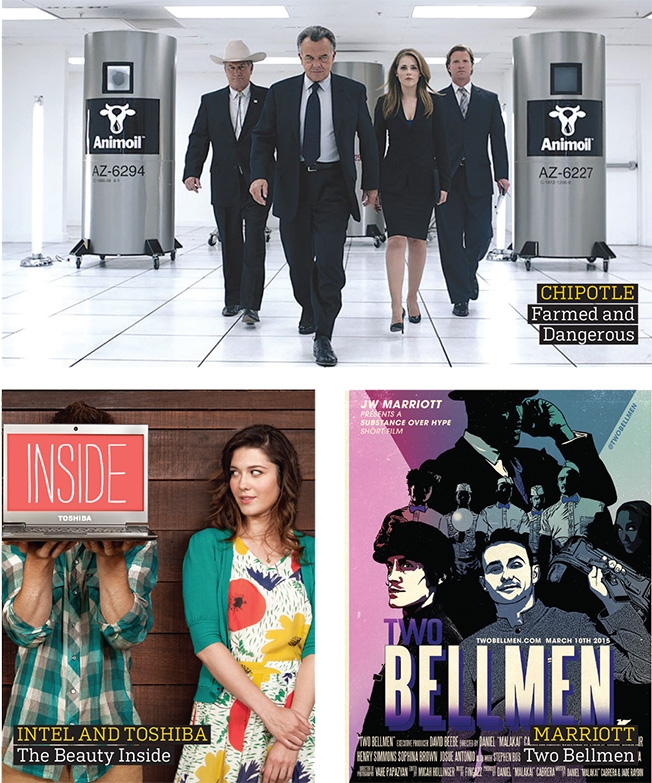
Just because you have a TV or movie star doesn’t automatically make your content branded entertainment.
by Kaaren Whitney-Vernon
Within the last few years, we’ve seen the TV and advertising industries devolve into a state of bedlam.
The ensuing conundrum of how you reach consumers when none of them is even remotely interested in watching your commercials has certainly made a few ad executives reevaluate their career choices. But it has also given rise to perhaps the mostcreative thinking our industry has witnessed in decades.

Kaaren Whitney-Vernon
For 70 years, the primary method to increase brand awareness and drive brand conversion to sell more products has been the 30-second TV spot. But with ad blocking and ad skipping the new norm, no one (or at least anyone with a mobile phone or Netflix) is watching your brand’s ad. This lack of eyeballs has given rise to other, more stealthy methods of getting brands in front of consumers.
Enter the misunderstood concept of “branded content.” Wikipedia’s definition is shapeless: “Branded content is a form of advertising that uses generating content as a way to promote a particular brand which funds the content’s production. Contrary to embedded marketing, where the brand is placed within the content, branded content places the content within the brand.”
For the most part, this is about putting a brand over a shallow narrative in a single, stand-alone piece of content. Where’s the story, characters, intrigue, suspense, romance, danger, comedy, etc.? And what happens if the viewer likes a piece of content and there’s no more to watch, share or champion?
In the years I’ve spent studying and tracking consumers’ responses to brands and content, especially millennial consumers, I’ve repeatedly seen that this audience is extremely savvy. They are well aware of when they are being “sold to” and placing a brand prominently, or even not-so-obviously, within the content doesn’t fool anyone. In fact it only turns them off, and quickly. They know before they have even seen the product if they are watching a commercial (skip) or watching a show (engage).
No one tweets in anticipation of the next commercial, but they repeatedly do in anticipation of the next episode of a show. Commercials are to tell the audience what your product does. Done correctly, branded entertainment tells your audience what your brand stands for.
When we made Carmilla for U by Kotex, we didn’t look to make a show about feminine hygiene products. We saw a bold, quirky brand and made an empowered scripted series. Enter the lesbian vampire show Carmilla, now in its third season on YouTube, with a 50 million global fan base and episodes translated into 14 languages. Obviously, it can work and at scale.
But if you’re still a little unsure about whether or not your “branded entertainment” is really just an ad, here are a few guidelines:
If your content is about your product and your product features—for example, a car video where the car is still front and center and includes beauty shots of the vehicle—it’s not branded entertainment, it’s an ad.
Using new tech or platform to show your ad still means it’s an ad.
Just because you have a movie or TV celebrity in your content does not automatically make it branded entertainment. It’s still an ad if that celebrity is talking about the brand or holding/driving/eating/drinking the product. If your content includes your logo in the first 30 seconds—it’s not branded entertainment, it’s an ad.
These guidelines and definitions may help, but seeing is believing. Here are some examples of branded content that effectively won over fans while also communicating each brand’s values to consumers,
Farmed and Dangerous and The Scarecrow, Chipotle: These branded series tapped into the growing youth trend of understanding ethical food sources and made an emotional connection for the brand and this type of consumer.
Two Bellmen, Marriott: Millennials are tired of brands trying to sell them. Give audiences something of value and they will buy your products. Two Bellmen was directly linked to a sales ROI that was measured in bookings for this hotel chain.
The Beauty Inside, Intel and Toshiba: This series illustrates how well they understood their brand archetype and were able to translate their brands’ values to a compelling story—without product placement. Intel took its invisible product (computer processors) with little consumer interaction and made consumers question the need to know what is inside.
In a world where subscriptions to broadband-delivered (OTT) services will soon exceed traditional video or linear subscriptions, we are now arriving at the inflection point and advertisers who once experimented with new ways of getting their messages to consumers are now realizing it’s time to move into this next phase—and quickly.
True branded entertainment may not only be the saving grace the ad industry has been searching for, but it could also be the way advertisers connect with consumers on a more substantive level than ever before.

